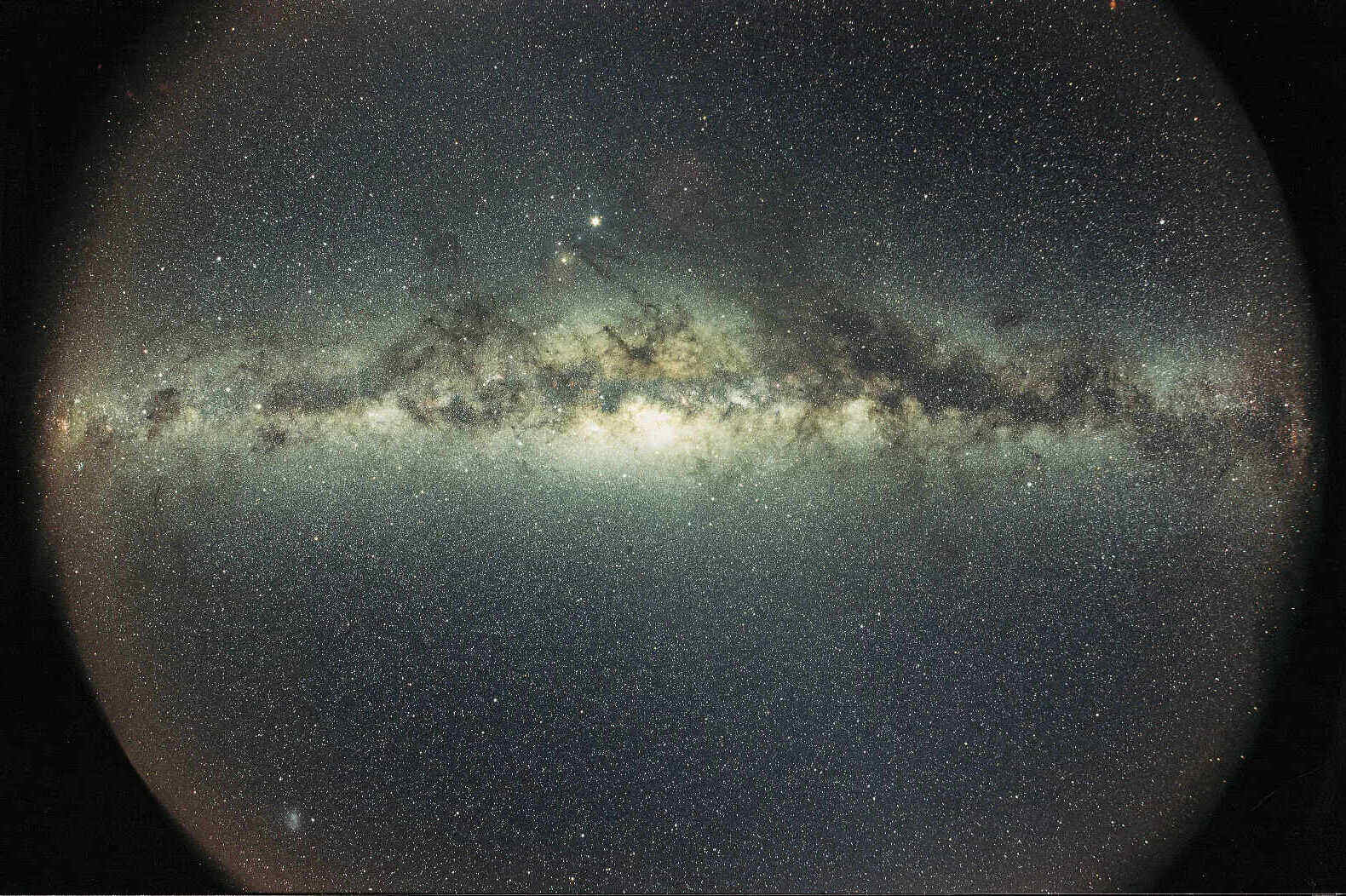
What is the structure of our galaxy? Our galaxy, the Milky Way, is a vast, spiraling collection of stars, gas, and dust. It has a barred spiral structure with several key components. At the center lies the galactic bulge, a dense region packed with older stars. Surrounding this bulge is the disk, where most of the galaxy's stars, including our Sun, reside. This disk features spiral arms that wind outward, rich with young stars and nebulae. Beyond the disk is the halo, a spherical region containing older stars and globular clusters. Dark matter also plays a crucial role, forming an invisible halo that influences the galaxy's rotation. Understanding these elements helps us grasp the Milky Way's complexity and our place within it.
Key Takeaways:
- The Milky Way is a massive, spiral-shaped galaxy with a central bar and four main spiral arms where stars are born. Our solar system is just a tiny speck in this vast cosmic neighborhood.
- The galactic center is a bustling hub with a supermassive black hole and intense energy emissions. Surrounding the Milky Way is a halo of older stars and mysterious dark matter, creating a fascinating cosmic playground.
The Milky Way Galaxy
The Milky Way is our home galaxy, a vast collection of stars, planets, and other celestial objects. Let's dive into some fascinating facts about its structure.
- The Milky Way is a barred spiral galaxy, meaning it has a central bar-shaped structure made of stars.
- It spans about 100,000 light-years in diameter, making it one of the larger galaxies in the universe.
- Our solar system is located about 27,000 light-years from the galactic center.
- The Milky Way contains between 100 billion and 400 billion stars.
- It has four main spiral arms: the Perseus Arm, the Sagittarius Arm, the Scutum-Centaurus Arm, and the Norma Arm.
Galactic Center
The center of the Milky Way is a bustling region with unique features and phenomena.
- At the heart of the Milky Way lies a supermassive black hole called Sagittarius A*.
- This black hole has a mass equivalent to about 4 million suns.
- The galactic center is surrounded by a dense cluster of stars known as the nuclear star cluster.
- Intense radio waves and X-rays are emitted from this region due to high-energy processes.
- The central bulge of the Milky Way is a spherical region filled with older stars and interstellar dust.
Spiral Arms
The spiral arms of the Milky Way are where much of the star formation occurs.
- These arms are regions of higher density within the galactic disk.
- They contain large amounts of gas and dust, the raw materials for new stars.
- The Sun is located in a minor arm called the Orion Arm or Orion Spur.
- Spiral arms are sites of active star formation, with many young, hot stars.
- The arms are also home to many nebulae, which are clouds of gas and dust.
Galactic Halo
The halo is a spherical region surrounding the Milky Way, containing older stars and globular clusters.
- The halo extends far beyond the visible part of the galaxy, up to 300,000 light-years.
- It contains about 150 known globular clusters, which are tightly bound groups of old stars.
- Dark matter, an invisible substance, is believed to make up a significant portion of the halo's mass.
- The halo stars are generally older and have lower metallicity compared to those in the disk.
- The halo also contains high-velocity stars, which move faster than typical stars in the galaxy.
Galactic Disk
The disk is the flat, rotating part of the Milky Way where most of its stars and nebulae are found.
- The disk is about 1,000 light-years thick but much wider in diameter.
- It contains the majority of the galaxy's stars, including the Sun.
- The disk is divided into two parts: the thin disk and the thick disk.
- The thin disk contains younger stars and is where most of the star formation occurs.
- The thick disk contains older stars and has a higher concentration of heavy elements.
The Final Frontier
Understanding galactic structure opens up a universe of knowledge. From the spiral arms of the Milky Way to the supermassive black holes at galaxy centers, each fact reveals a piece of the cosmic puzzle. These structures aren't just random; they follow patterns shaped by gravity, dark matter, and cosmic forces.
Knowing these facts helps us grasp our place in the universe. It’s not just about stars and planets; it’s about the interconnectedness of everything. Each galaxy tells a story of formation, evolution, and interaction.
So next time you gaze at the night sky, remember the vast, intricate structures out there. They’re not just distant lights; they’re part of a grand design that we’re still uncovering. Keep exploring, keep questioning, and let the stars guide your curiosity.
Frequently Asked Questions
Was this page helpful?
Our commitment to delivering trustworthy and engaging content is at the heart of what we do. Each fact on our site is contributed by real users like you, bringing a wealth of diverse insights and information. To ensure the highest standards of accuracy and reliability, our dedicated editors meticulously review each submission. This process guarantees that the facts we share are not only fascinating but also credible. Trust in our commitment to quality and authenticity as you explore and learn with us.
